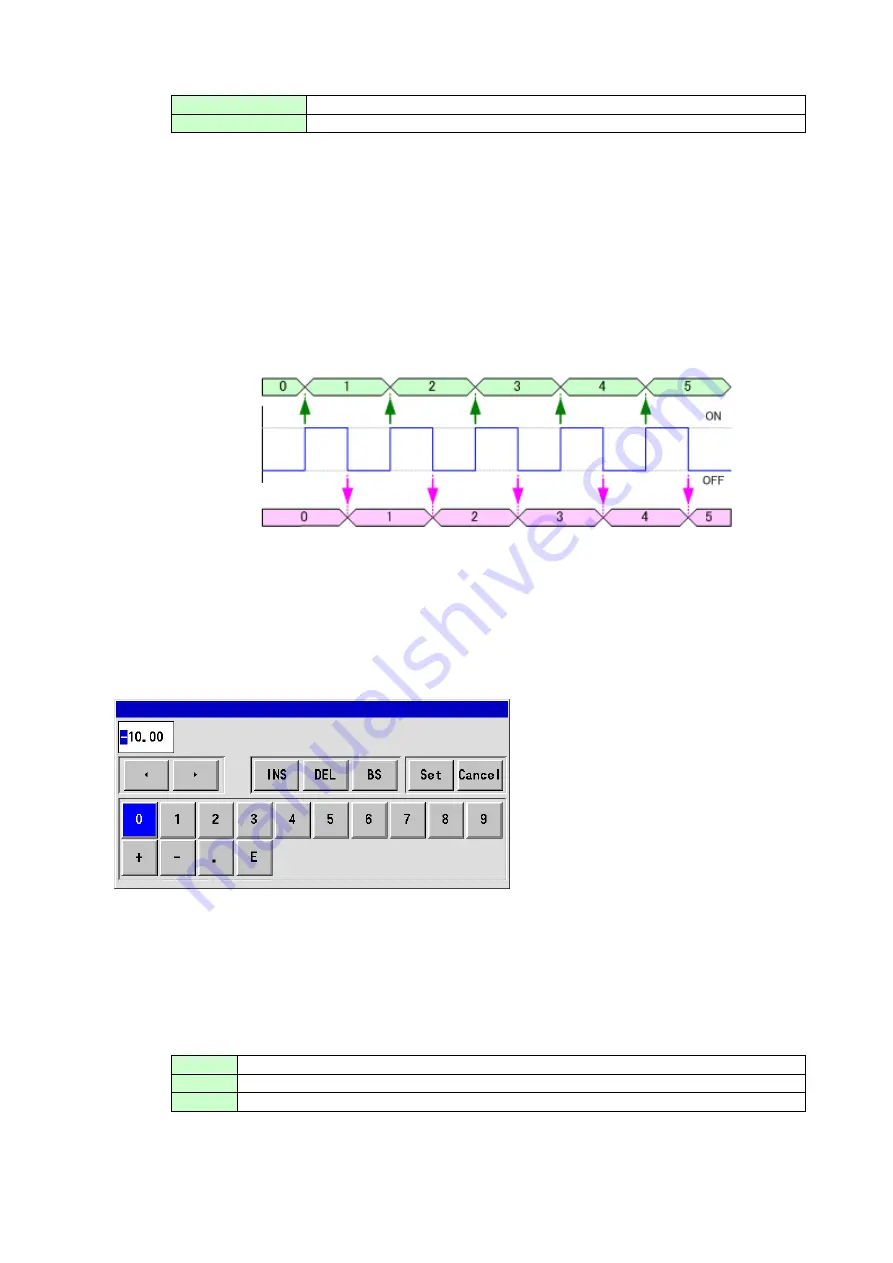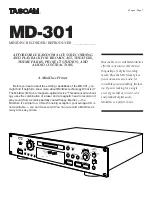
61
Digital input type (Digital input type (for models with digital input): CH121 to 128)
Digital input
DI
Pulse input
Pulse (+)*, Pulse (-)**
Pulse (+)*: pulse counter increases at a rising edge (OFF to ON) of input signal.
Pulse (-)**: pulse counter increases at a falling edge (ON to OFF) of input signal.
Digital input: DI
Records ON/OFF status of digital input.
Pulse input: Pulse (+) and Pulse (
−
)
Counts pulse inputs (calculates the number of pulses) using ON/OFF inputs of the
contacts as pulse signals. Pulse inputs of 5 Hz or more can be counted.
Pulse (+): counts changes of digital input from OFF to ON.
Pulse (
−
): counts changes of digital input from ON to OFF.
The pulse input total rolls over (is reset) to the low limit of the scale when it reaches the
high limit.
■
Range
• Set the range. (The range depends on the range type and sensor type.)
■
Scale
• Set the scale. (The scale depends on the range type and sensor type.)
■
Sensor correction
• Set a value (shift value) to be added to the input value.
■
Reference junction compensation (RJ)
• Set the RJ to either internal or external.
■
Available burnout settings
None
The burnout function is not used.
UP
If burnout occurs, indication will be upscale.
DOWN If burnout occurs, indication will be downscale.
■
Setting the filtering level
• The input filter level can be set from 0 to 3, with 0 as no filter and 3 as the strongest filter. If
Range type:Pulse(+)
Range type:Pulse(-)
Digital input
Correctly input the position of the
decimal point here since it becomes
the position of the decimal point for
measurement values.
。
















































